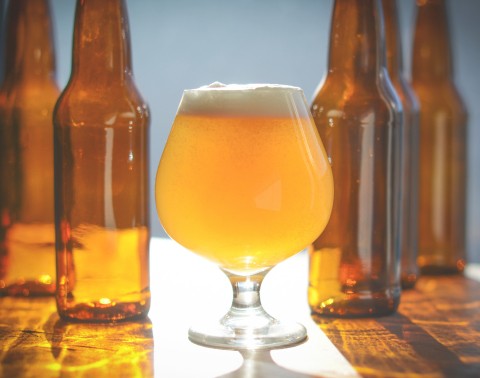The craft beer industry expanded in recent years, but is also facing some new challenges. In 2014 U.S. craft breweries' output soared to 22 million beer barrels, a 18 percent increase from one year before.
That figure is from the National Brewers Association. The output is over twice the production of craft breweries as lately as 2009.
The Brewers Association sets various qualifications for a "craft brewery." It is a brewery that produces a maximum of 6 million beer barrels yearly.
Also, less than one-fourth of the company can be owned by a non-craft brewer brewery. That includes ones such as MillerCoors and Anheuser-Busch InBev.
Thirdly, the majority of the craft brewery's total alcohol sales must be in beers of particular flavors. Those are flavors that come from innovative and/or traditional brewing ingredients.
Last year 615 new craft breweries nationwide opened, according to The Bulletin. The total was around 3,400, and a 20 percent surge from 2013.
Paul Leone, director of the Brewers Association of New York, says that the sector is seeing "year after year" growth, according to Star Gazette. Being in the industry now is "exciting."
Oregon's figures are especially worth mentioning. That is because it became the first state in which craft brews comprise one-fifth of the entire beer market.
The rising popularity of craft beers caused the demand for hops to soar. Hops is one of the main flavor ingredients in several beers.
One potential problem resulting from the increased demand for craft beers is for craft breweries to brew beyond their capacities. Chris Hodge, CEO of a craft brewery, says that his business's greatest challengeis "managing growth."
Craft beer still makes up just 11 percent of all beer that American beer drinkers consume. However, it only comprises about 19 percent of the money that U.S. consumers spend on beer.
That leaves a lot of room for expansion in the craft beer sector-growing pains and all.



























